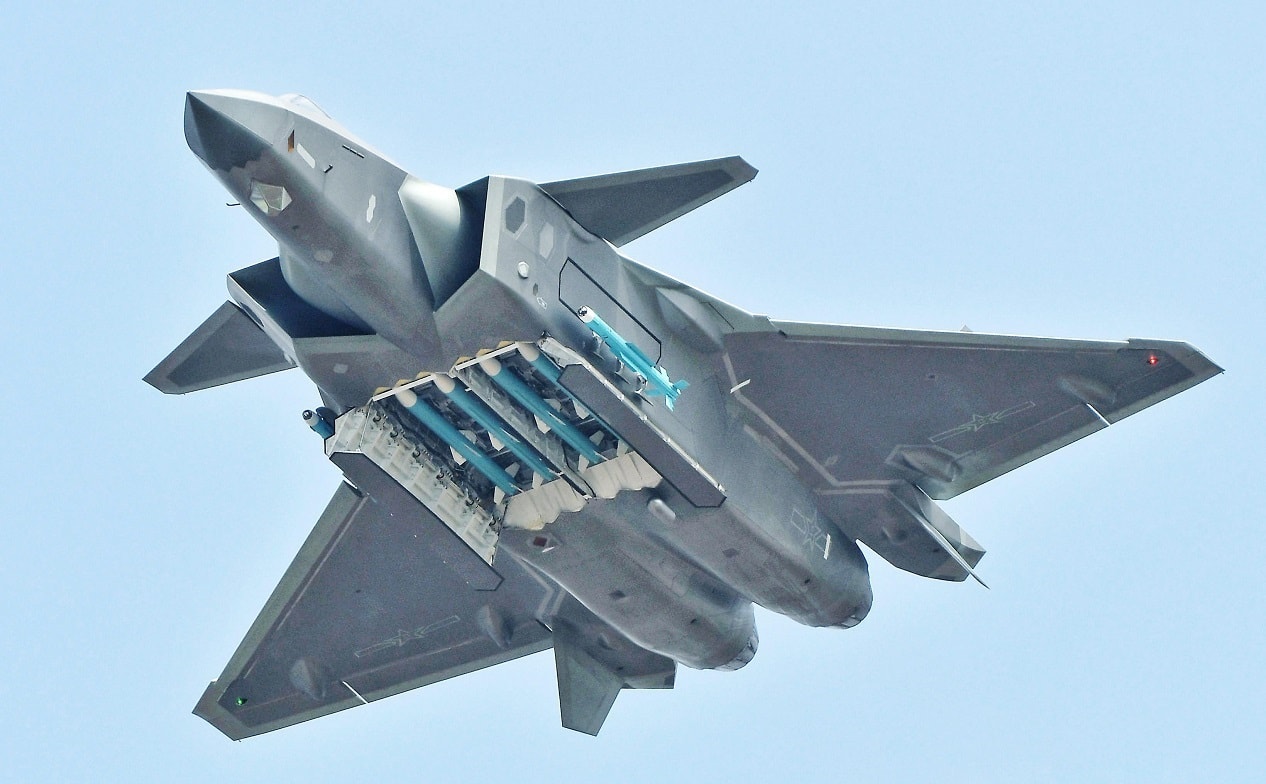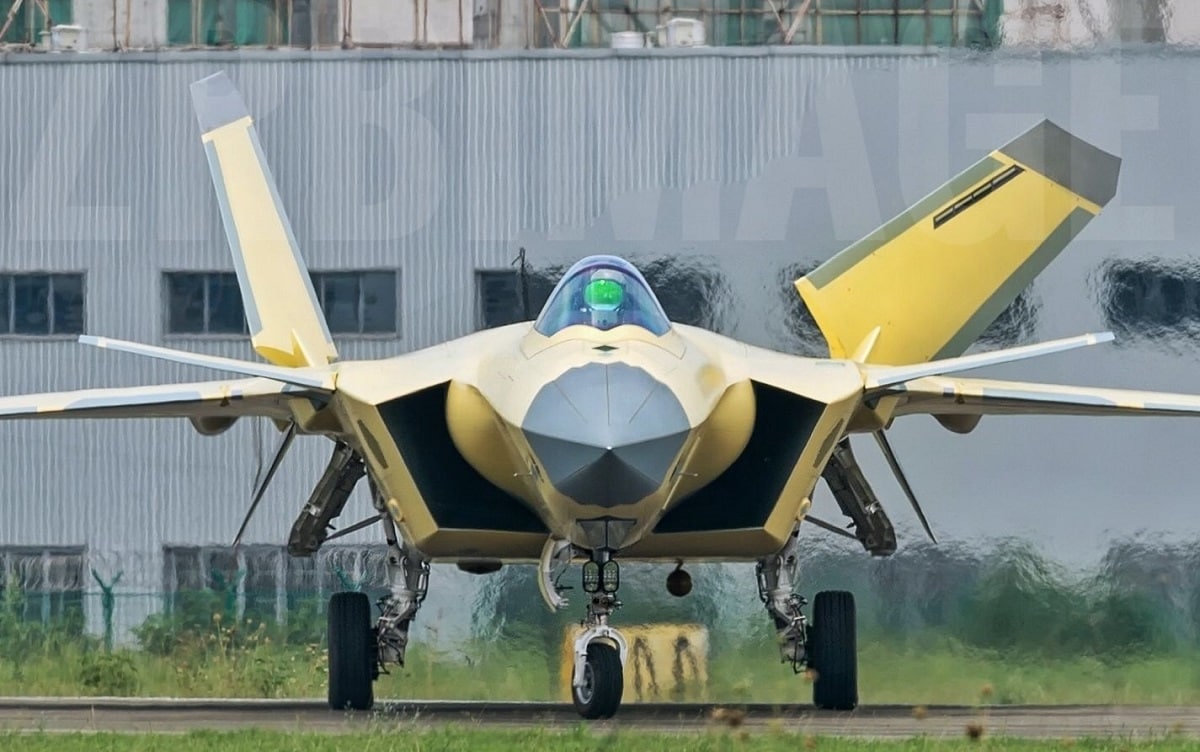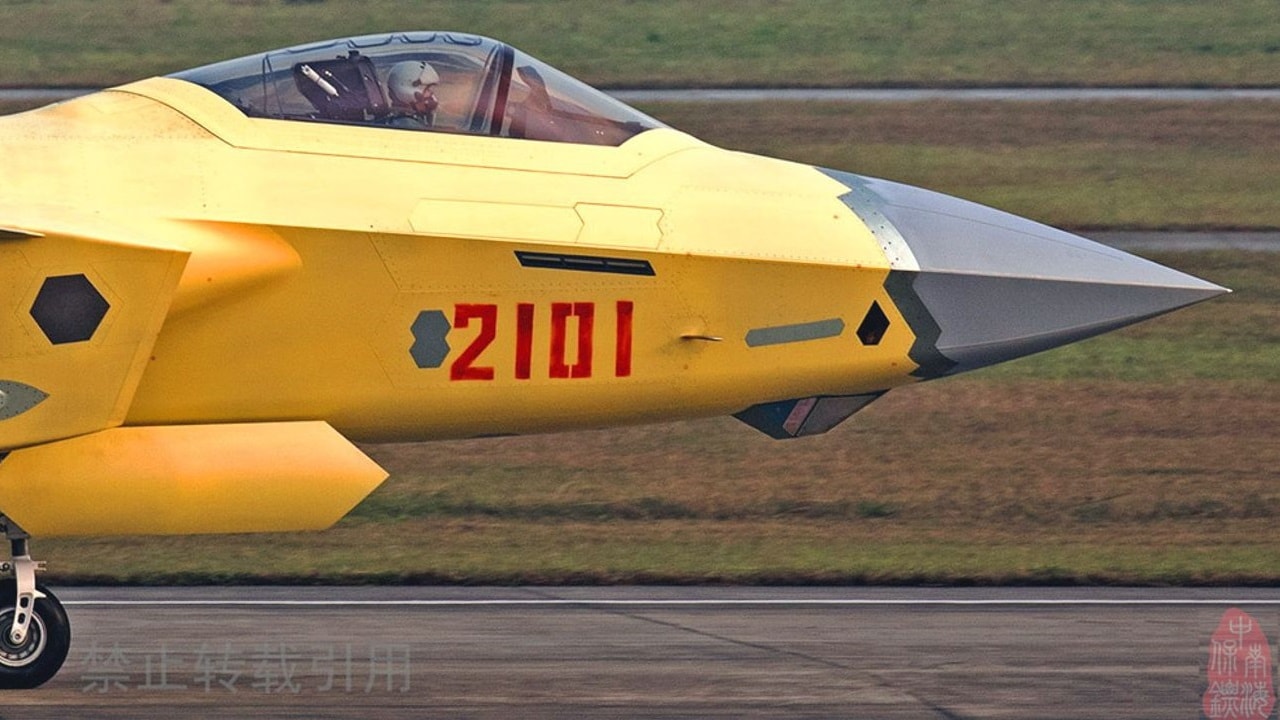China is often accused of stealing technology from the Americans to build its fifth-generation fighters.
However, there is the possibility that the Chinese also copied some designs from the Soviets when designing their J-20 stealth fighter. Featuring a similar wing layout, China may have “borrowed” some design ideas from the failed Soviet fifth-generation fighter, the MiG 1.44.

J-20 Stealth Fighter.
The Soviet Union’s Fifth-Gen Attempt
The MiG 1.44, also known as the Mikoyan Project 1.44/1.42 (the two prototypes built were named 1.44 and 1.42), was a technology demonstrator developed by the Mikoyan design bureau in the Soviet Union. It was intended to be a fifth-generation fighter, incorporating advanced avionics, stealth technology, supermaneuverability, and supercruise capabilities in response to the American “Advanced Tactical Fighter” program.
The MiG 1.44 project began in the late 1970s when the Soviet high command recognized the need for a new generation of fighter aircraft to maintain competitiveness into the 1990s and beyond. The procurement order went to Mikoyan in 1983, and after extensive experimentation, Mikoyan settled on a delta wing design. The aircraft featured a duck-like delta wing configuration, which was distinct from the forward-swept wing designs of rival aircraft manufacturer Sukhoi.
The MiG 1.44 was designed to be equipped with the AL-41F engine. It was supposedly capable of reaching Mach 2 at speeds of approximately 1,500 km/h and had a range of up to 4,500 km. It had twelve internal and eight external hardpoints, compatible with a wide array of Soviet missiles, including the Kh, KAB, and air-guided R-73/R-77 missiles.
Despite its ambitious design, the MiG 1.44’s integrated avionics and stealth capabilities remain largely unknown due to the project’s premature termination.
The Fall of the USSR and the End of the MiG 1.44
Unfortunately for the MiG 1.44, the collapse of the Soviet Union spelled doom for the project. Following the dissolution of the Iron Curtain, Russia was thrown into an economic crisis, which ultimately led to the project’s cancellation due to budget constraints.
The MiG 1.44 never saw mass production; instead, the project was lost to its competitor, the PAK-FA, which later became the Su-57.
J-20: China’s First Stealth Aircraft
The Chengdu J-20, also known as the Mighty Dragon, is a fifth-generation multirole stealth fighter developed by the Chengdu Aircraft Industry Group (CAIG) for the People’s Liberation Army Air Force (PLAAF) of China.
The development of the J-20 began in the late 1990s under the J-XX program, with CAIG selected as the prime contractor in 2008. The J-20 features a blended fuselage and V-shaped tail, designed for stealth and high-speed performance. Its design incorporates elements from various sources, some of which bear a striking resemblance to the F-22 Raptor.
The J-20 is powered by two Shenyang WS-10G turbofan engines, each providing 30,000 lb of thrust. It has a maximum speed of 2,100 km/h, a range of 3,400 km, and a service ceiling of 18,000 meters. The aircraft is equipped with eight hardpoints and is capable of carrying a variety of weapons, including air-to-air and air-to-ground missiles. The J-20 reached operational service status in September 2017. Like the MiG 1.44, the J-20 was built as China’s response to the F-22.

Image: Creative Commons.
Did the Chinese Copy the MiG 1.44?
Despite the MiG 1.44 being canceled back in 2000, Russian news media outlets were quick to point out the similarities between it and the J-20. “In my opinion, the machine is based on the Russian MiG 1.44. That plane was created to compete with the PAK FA at the preliminary design stage and made its maiden flight in 2000,” deputy editor-in-chief of Russia’s Arsenal of the Fatherland magazine, Dmitry Drozdenko, said on Sputnik radio. Other outlets were also quick to point out some of the similarities between the two aircraft.
Mikoyan denied any involvement in the development of the J-20. However, in 2011, Thomas Grove interviewed an unnamed source within Russia’s defense industry for Reuters. The source claimed that Mikoyan had provided help with the J-20’s development. “It looks like they got access… to documents relating to the Mikoyan — the aircraft that the Ministry of Defense skipped over in its tender to create a stealth fighter,” the source said.
The source was further corroborated by Russian analyst Adil Mukashev, who confirmed that the Chinese did buy parts and technology from Mikoyan.
The inside of the J-20 is a completely different matter. It is impossible to tell how much of the avionics were copied from Mikoyan by the Chinese. Russian media correspondent Viktor Litovkin wrote on the subject, “Comparison of the Chinese J-20 with the domestic MiG 1.44 is natural.
The appearance of the two aircraft is very similar. As for the internal layout, questions arise. How accurately are the instruments and equipment copied?” Without an inside view of the J-20, it is impossible to say. It is likely that the internal components are domestically made or “heavily inspired” by American electronics.
The J-20 is not a copy of the MiG 1.44. However, based on the evidence, Mikoyan was assisting the Chinese in the development of their aircraft.
The move was likely made in light of Mikoyan’s dire financial state in the early 2000s. Regardless, the Chinese have the Soviets to thank for their first fifth-generation aircraft.
About the Author: Isaac Seitz
Isaac Seitz, a 19FortyFive Defense Columnist, graduated from Patrick Henry College’s Strategic Intelligence and National Security program. He has also studied Russian at Middlebury Language Schools and has worked as an intelligence Analyst in the private sector.

